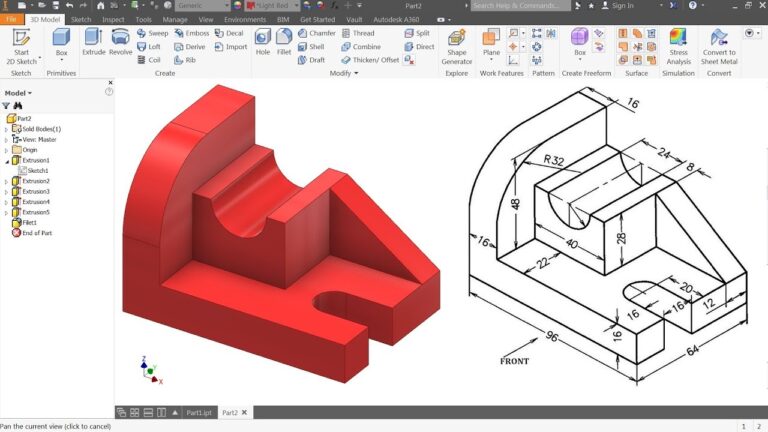Lucrative Programmer Job: High Salary & Exciting Responsibilities

Programmer Job Description Template
Programmer Job Description A programmer is an individual who specializes in writing, testing, and maintaining computer programs. They are responsible for translating software requirements into code and ensuring that it functions properly. Programmers work closely with software developers and engineers to design and implement software solutions. One of the most important skills for a programmer is proficiency in programming languages such as Java, C++, Python, or JavaScript. They must also have a solid understanding of algorithms and data structures to efficiently solve complex problems. In addition to coding, programmers are involved in the entire software development lifecycle. This includes analyzing user requirements, creating technical specifications, and conducting system testing and debugging. They must have strong problem-solving skills and attention to detail to identify and fix any issues that may arise. Collaboration and teamwork are essential qualities for programmers as they often work in teams to develop and maintain software projects. Effective communication skills are also crucial for discussing requirements with clients and stakeholders, as well as for documenting and presenting their work. As technology continues to advance, programmers must stay updated with the latest programming languages, tools, and frameworks. Continuous learning and professional development are necessary to keep up with the evolving industry trends and to enhance their skills. In summary, a programmer is a highly skilled professional who writes, tests, and maintains computer programs. They possess strong coding skills, problem-solving abilities, and effective communication skills to develop and deliver high-quality software solutions.Programmer Responsibilities
Programmer Requirements
How Much Does A Programmer Make?
Programmer Salary
| Position | Salary Range |
|---|---|
| Junior Programmer | $40,000 – $60,000 |
| Mid-level Programmer | $60,000 – $80,000 |
| Senior Programmer | $80,000 – $100,000 |
| Lead Programmer | $100,000 – $120,000 |
| Architect | $120,000 and above |
Programmer salaries vary depending on factors such as experience, location, and the company they work for. The table above provides a general salary range for different positions in the programming field. It is important to note that these figures are approximate and may vary. Junior programmers typically earn between $40,000 and $60,000 per year, while mid-level programmers can expect to make between $60,000 and $80,000. Senior programmers earn higher salaries, ranging from $80,000 to $100,000, while lead programmers can earn between $100,000 and $120,000. Architects, who are often in senior leadership roles, typically earn $120,000 and above. Keep in mind that these figures are just estimates and actual salaries may differ based on individual circumstances.
Programmer Salaries by Country
Top Paying Countries for Programmers
| Country | Average Salary (USD) |
|---|---|
| United States | 105,000 |
| Switzerland | 95,000 |
| Denmark | 90,000 |
| Australia | 85,000 |
| Norway | 82,000 |
According to recent studies, the United States is the top paying country for programmers, with an average salary of $105,000 per year. Switzerland follows closely behind with an average salary of $95,000, while Denmark, Australia, and Norway also offer high salaries ranging from $90,000 to $82,000. These countries not only provide lucrative job opportunities for programmers but also offer a high standard of living and excellent career prospects in the tech industry.
A video on the topic Programmer
Video Source : FireshipInterview Questions for Programmer
1. What is the difference between procedural programming and object-oriented programming?
Procedural programming focuses on writing procedures or functions that perform specific tasks, whereas object-oriented programming focuses on creating objects that contain both data and methods to manipulate that data.
2. What is the importance of version control in programming?
Version control allows programmers to track, manage, and collaborate on changes made to a codebase. It provides a history of modifications, helps resolve conflicts, and facilitates teamwork by allowing multiple developers to work on the same project simultaneously.
3. Explain the concept of polymorphism in object-oriented programming.
Polymorphism is the ability of an object to take on many forms. In programming, it allows objects of different classes to be treated as objects of a common superclass. This enables code reuse, flexibility, and extensibility.
4. What is the purpose of a constructor in a class?
A constructor is a special method in a class that is invoked when an object of that class is created. It is used to initialize the object’s state and perform any necessary setup operations.
5. How does garbage collection work in programming languages?
Garbage collection is an automatic memory management process where the programming language’s runtime system deallocates memory that is no longer needed. It identifies unused objects and frees up their memory to be reused.
6. What is the difference between compile-time and runtime errors?
Compile-time errors occur when the code is being compiled and prevent the program from being successfully compiled. Runtime errors, on the other hand, occur during the execution of a program and can cause it to terminate abruptly or behave unexpectedly.
7. Explain the concept of abstraction in programming.
Abstraction is the process of simplifying complex systems by breaking them down into smaller, more manageable components. It allows programmers to hide unnecessary details and only focus on the essential features of an object or system.
8. What is the purpose of an API (Application Programming Interface)?
An API is a set of rules and protocols that allows different software applications to communicate and interact with each other. It provides a standardized way for developers to access and use the functionality of a software library or service.
9. What is the difference between synchronous and asynchronous programming?
In synchronous programming, tasks are executed one after the other, and the program waits for each task to complete before moving on to the next. In asynchronous programming, tasks can be executed concurrently, and the program can continue executing other tasks while waiting for certain operations to complete.
10. How do you handle exceptions in programming?
Exceptions are handled using try-catch blocks. The code that might throw an exception is placed within the try block, and any potential exceptions are caught and handled in the catch block. This allows the program to gracefully handle errors and prevent them from crashing the program.






